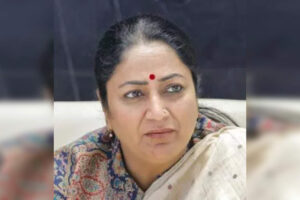Class VI Health: Growth and Development
Health & Physical Education – CLASS-VI – UNIT 1: GROWTH AND DEVELOPMENT

- Physical Development
- Psychomotor Development Definition
In the context of the physical development of children, growth refers to the increase in the size of a child, and development refers to the process by which the child develops his or her psychomotor skills.
The period of human growth from birth to adolescence is commonly divided into the following stages:
Infancy: From birth to taking solid food.
Childhood: From talking solid food to the end of brain growth.
Juvenile: From the end of childhood to adolescence.
Adolescence: From the start of growth to reaching puberty.
The height of the average infant increases by 30% by the age of five months. And the height increases by 50% by the age of one year. The height of a five-year-old usually doubles relative to that at birth. The limbs and arms grow faster than the trunk, so that body proportions undergo marked variation as an infant grows into an adolescent. Different body systems grow and develop at different rates. For example, if infants grow in height as quickly as they do in weight, the average one- year-old would be approximately 5 ft. (1.5m) tall. Thus, weight increases faster than height and an average infant doubles his birth weight by the age of five months. and triples it by the age of one year. At two years of age, the weight is usually four times the weight at birth.
Physical Development
During the growth period, all major body systems also mature. The major changes occur in the following systems:
Skeletal system: At birth, there is very little bone mass in the infant body, the bones are softer and much more flexible than in the adult. The adult skeleton consists of 206 bones joined to ligaments and tendons. It provides support for the attached muscles and the soft tissues of the body. Babies are born with 270 soft bones that eventually fuse together by the age of 20 into the 206 hard, adult bones.
Lymphatic system: The lymphatic system has several functions. It acts as the body’s defense mechanism by producing white blood cells and specialized cells (antibodies) that destroy foreign organisms that cause disease. It grows at a constant and rapid rate throughout childhood, reaching maturity just before puberty.
Central nervous system (CNS): The CNS consists of the brain, the cranial nerves, and the spinal cord. It develops mostly during the first years of life. Although brain cell formation is almost complete before birth, brain maturation continues after birth. The brain of the newborn is not yet fully developed. But brain development up to age one is more rapid and extensive than was previously, realized. At birth, the brain of the infant is 25% of the adult size. At the age of one year, the brain has grown to 75% of its adult size and to 80% by age three, reaching 90% by age seven. The influence of the early environment on brain development is crucial. Infants exposed to good nutrition, toys, and playmates have better brain function at age 12 than those raised in a less stimulating environment.
Psychomotor Development
During the first year of life, a baby goes through a series of crucial stages to develop physical coordination. This development usually proceeds from head to toe. For example, the visual system reaches maturity earlier than do the legs. First, the infant develops control of the head, then of the trunk (sitting up), then of the body (standing), and, finally, of the legs (walking). The head and trunk of the body develop before the arms and legs, and infants learn to control their neck muscles before they learn to direct their limbs. This development of physical coordination is also referred to as motor development and it occurs together with cognitive development, meaning the development of processes such as knowing, learning, thinking, and judging.
The stages of motor development in children are as follows:
First year: The baby develops good head balance and can see objects directly in his line of vision. He learns how to reach for objects and how to transfer them from one hand to the other. Sitting occurs at six months of age. Between nine and 10 months, the infant is able to pull himself to standing and takes his first steps. By the age of eight to 24 months, the baby can perform a variety of tasks such as opening a small box, making marks with a pencil, and correctly inserting squares and circles in a form board. He is able to seat himself in small chair, he can point at objects of interest, and can feed himself with a spoon.
Second year: At 24-36 months, the child can turn thepages of a book, scribble with a pencil and complete a form with pieces that are more complex than circles or squares. He can kick a ball and walk and run fairly well, with a good sense of balance. Toilet training can be started.
Third year: The child can now draw circles, squares, and crosses. He can build 10-block towers and imitate the building of trains and bridges. He is also achieving toilet independence. Hand movements are well coordinated and he can stand on one foot.
Fourth year: At that age, a child can stand heel to toe for a good 15 seconds with his eyes closed. He can perform the finger-to-nose test very well, also with eyes closed. He can jump in place on both feet.
Fifth year: The child can balance on tiptoe for a 10-second period, he can hop on one foot, and can part his lips and clench his teeth.
Sixth year: The child can balance on one foot for a 10-second period; he can hit a target with a ball from 5 ft (1.5 m), and jumps over a rope 8 of inch (20 cm) high.
Seventh year: He can now balance on tiptoes for a 10-second period, bend at the hips sideways, and walk a straight line, heel-to-toe for a distance of 6 ft. (1.8 m).
Eighth year: The child can maintain a crouched position on tiptoes for a 10-second period, with arms extended and eyes closed. He is able to touch the fingertips of one hand with his thumb, starting with the little finger and repeating in reverse order.
The development of motor skills in the child goes hand in hand with the development of cognitive skills, a process called cognitive development.
Cognitive development can be divided into four stages:
Sensorimotor stage: At this stage, infants discover their environment using a combination of sensory impressions (sight, smell, hearing, taste and touch) and motor activities.
Preoperational stage: At this stage, children are not able to use information in rational and logical ways; rather they use images and symbols. They learn how to associate cause and effect and to represent something with something else. Speech development begins.
Concrete operational stage: At this stage, children understand elementary logical principles that apply to concrete external objects. They learn to sort things into categories, reverse the direction of their thinking and think about two concepts (such as length and width) simultaneously.Formal operational stage: This stage is reached at adolescence. The individual can think in the abstract and speculate about probabilities and possibilities as well as reflect on their own thinking activities. The simultaneous development of motor skills and cognitive skills is commonly referred to as psychomotor development and it occurs with the maturation of the central nervous system (CNS).
Download PDF : ashamodernschool.in Class-6-Health & Physical Education-2025-26



